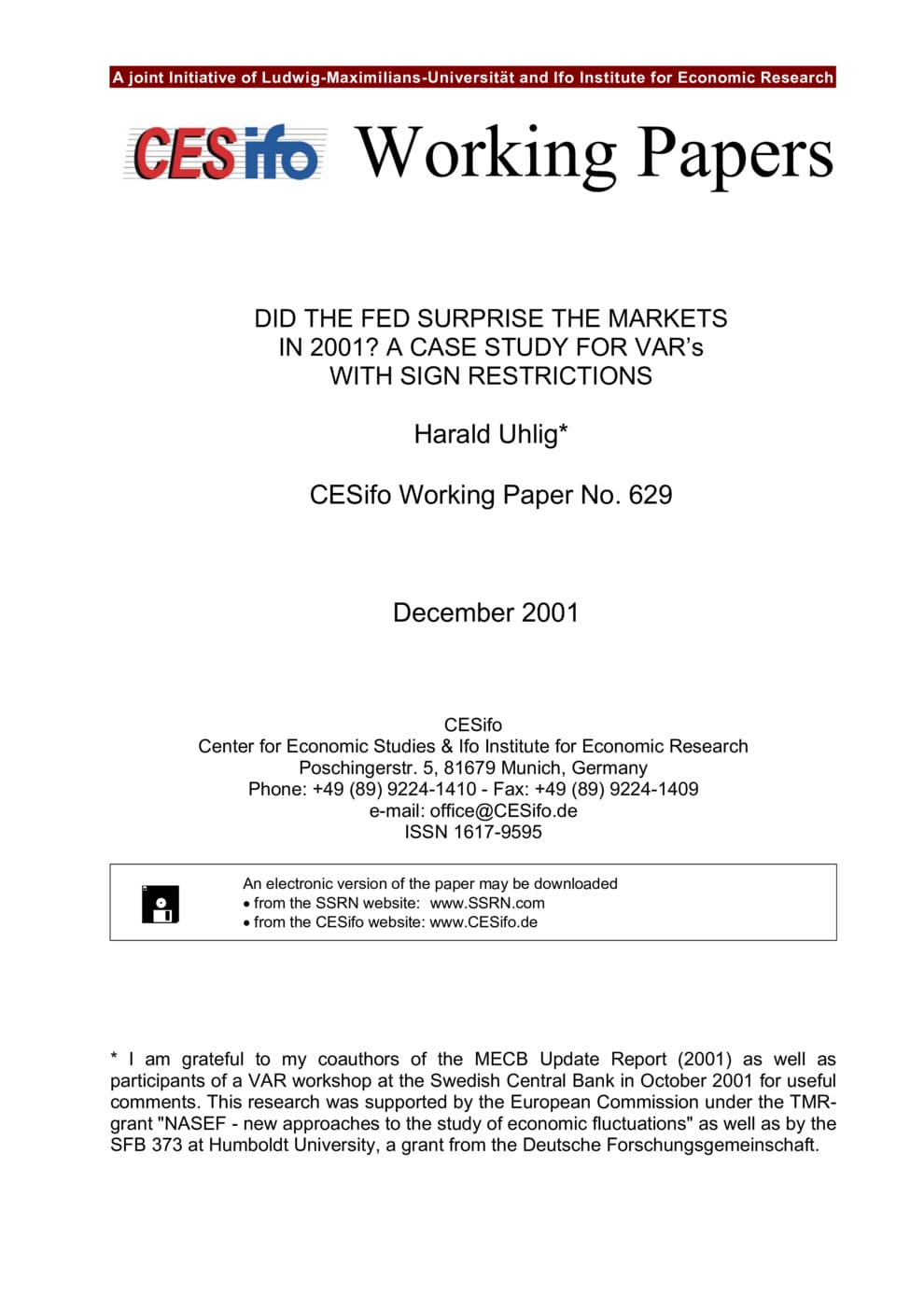Did the Fed Surprise the Markets in 2001? A Case Study for VARs with Sign Restrictions
CESifo, Munich, 2001
CESifo Working Paper No. 629

In 2001, the Fed has lowered interest rates in a series of cuts, starting from 6.5 per cent at the end of 2000 to 2.0 per cent by early November. This paper asks, whether the Federal Reserve Bank has been surprising the markets, taking as given the conventional view about the effect of monetary policy shocks. New econometric techniques turn out to be particularly suitable for answering this question: this paper can be viewed as a showcase and case study for their application. In order to concentrate on the Greenspan period, a vector autoregression is fitted to US data, starting in 1986 and ending in September 2001. Monetary policy shocks are identified, using the new sign restriction methodology of Uhlig (1999), imposing the "conventional view" that contractionary policy shocks lead to a rise in interest rates and declines in nonborrowed reserves, prices and output. We find that neither the Fed policy choices in 2001 nor those of 2000 were surprising. We provide a method to "explain" these interest rate movements by decomposing them into their sources. Finally, we argue that constant-interest-rate projections like those popular at many central banks are of limited informational value, can be highly misleading, and should instead be replaced by on-the-equilibrium-path projections.